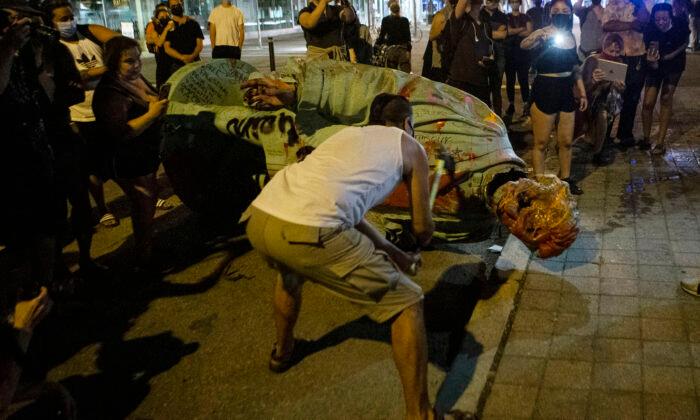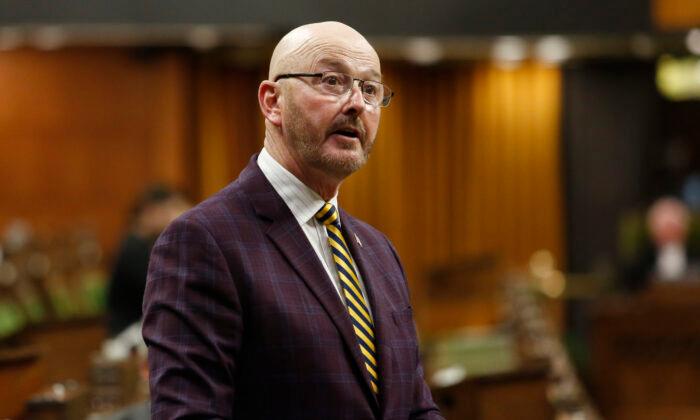Dr. Mark Totten, a sociologist and an expert on Canadian street gangs, says that while the federal government’s get tough approach on crime has its place, that alone will do nothing to stem the proliferation of native gangs that are largely a result of the intense poverty in some First Nations communities.
“We just can’t imprison our way out of this. The answer is not building more jail cells,” says Totten.
“It gets the bad guys off the street for a little bit, but the bad guys still continue to do bad things when they’re in prison because prisons are such a violent place. They’re also gang-infested, and just because you lock up a gang leader doesn’t mean they’re going to stop running their gang.
“One of the better ways to run a gang is to be sentenced to a prison or a jail in this country.”
For every gang member taken off the street, he says, “a couple more are going to take his or her place.” In addition, those who are not members of a gang when first imprisoned most likely will be by the time they are released. Because of the violence, many prisoners need the protection of a gang to survive.
Adding to the problem, says Totten, is that aboriginal birth rates are rapidly increasing. He estimates that in the next five to ten years, many big urban centres as well as smaller cities will have very high aboriginal populations.
“If we don’t radically change how we deal with these issues, then we’re going to have double the number of gang members, double the number or homicides and suicides, double the number of aboriginal people locked up in facilities,” he says.
The government recently announced the need to expand its budget for federal prisons by 36 percent by 2013. The Liberals say the spending is the cost of the Conservatives’ tough-on-crime agenda that has seen longer sentences handed down for some offences.
Totten, who collaborates with groups in Ontario and Western Canada in the development and evaluation of gang prevention, intervention, and suppression strategies, says the desperate poverty in some First Nations communities fuels gang growth.
“A lot of kids and young adults will say, ‘The gang is my job. The gang is my family. Nobody worked in my reserve or in my neighbourhood, it was impossible to get real job that paid OK. I can make quick money in a gang. I can deal meth or I can deal crack or I can let girls work the street, and it’s really quick money.’”
One of the differences between aboriginal gangs and most other gangs in Canada, he adds, is that “almost all have grown up in severe poverty. It’s not just a little bit of poverty, but it’s very, very deep, grinding poverty, and they grow up in families where they don’t know where the next meal is going to come from, or maybe the family is homeless.”
Increase across the country
With names such as Indian Posse, Red Alert, Native Syndicate, and Native Syndicate Killers, aboriginal gangs are operating not only in the big cities but also in many rural areas including in the Far North.
“Right across Canada we’re seeing an increase in aboriginal gangs,” says Cpl. Mike Moyer, aboriginal gang coordinator for the RCMP in British Columbia.
“All our agencies and RCMP detachments and our national headquarters and all our police services really are having to look at this issue at a lot more serious rate than what we did say 10 years ago.”
Native gangs get up to much the same illegal activities as any other gang, such as drug distribution, theft, and prostitution, he says.
“You’re going to see them involved in all kinds of crimes and criminal activity that are out there. All gangs, no matter what nationality they are or ethnic group they come from, are basically looking at how to make money really quickly. And unfortunately a lot of it is drug-based.”
However, one difference is that aboriginal gangs have been known to make use of powwows and other traditional ceremonies to recruit members, he says.
Most gangs are fluid, and will move to wherever they can make money, including areas that have oil and gas exploration.
“It’s really a marketing thing,” says Moyer. “Sometimes the market is saturated with other gangs and other criminal activities so they go wherever the next market is.”
Aboriginal gangs have been making steady inroads into some smaller communities across the country as well, Moyer says, adding that police are working to assist communities where gangs are an issue “to kind of create tools in their toolbox.”
“We’ve been really trying to take a proactive approach and work with a lot of our communities and when we start to see little, tiny problems, trying to get in there and work with the community, to be proactive so that they’re not left trying to deal with the problem after, because after the fact it’s too late.”
He agrees that more jail time is not the answer.
“Definitely the government and other agencies really need to, when they start to see issues, take a strong stance and look at alternate solutions and other programs that can be implemented, because as we’ve seen over and over again, gangs are not going to be solved or eradicated by enforcement issues alone.”
Anti-gang strategies
Most provinces have anti-gang strategies that apply various approaches. One recently implemented in Manitoba includes a component that helps parents understand how gangs operate in order to keep their kids from joining up.
Totten, who is currently evaluating a number of anti-gang projects, says this is a very important step, as are early intervention and prevention programs.
He says more effort should be put into keeping aboriginal children in schools that are culturally based, addressing health problems such as fetal alcohol spectrum disorder, and keeping children from troubled families in the home if at all possible rather than placing them in care.
Because gang members see the gang as their identity, giving aboriginal children and youth a sense of their own culture helps increase their attachment to community and in turn decrease their need for an alternative source of identity.
But some aboriginals are born into gang families, and for them there’s no choice whether to join or not, says Totten.
“When you are born into a gang it’s not like there are any other options. It’s not like you can choose not to be a gang member.”
Getting out is also very difficult for female aboriginals who have been recruited into gangs. Female gang members—who Totten notes are a very small minority—are usually initiated through gang-rapes and beatings. In order to leave, they have to go through the same treatment.
“Quite often the way to get out of a gang if you’re a young woman and if you don’t have these family ties is that you get beaten to within an inch of your life, or you get gang-raped again.”
Typically, says Totten, gang members who decide to leave have been shot one too many times, want to get their children back from child welfare, or are tired of sticking a needle in their arm.
“The reasons why these young adults choose to get out of gangs are not dissimilar from what you or I, our hopes for the future would be—to have a job, to support a family, to be a good community member.”







